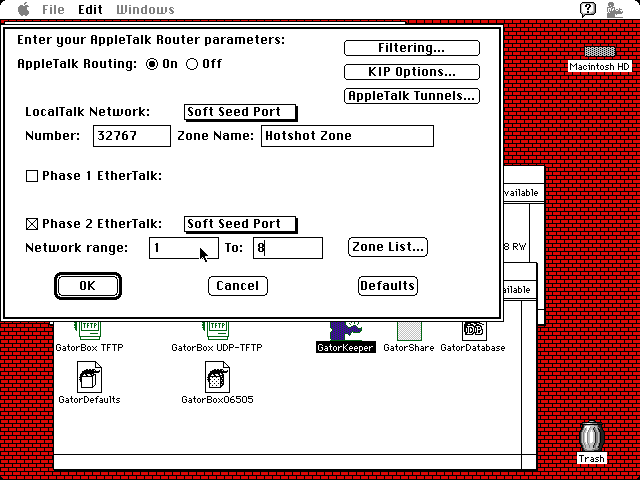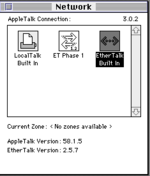There are 3 relevant versions of
Inside AppleTalk. The first one is a 1986 preliminary release for developers, and mostly just covers the serial port implementation, later called LocalTalk. The second one is the 1989 "First Edition" (not marked that way though), which talks about EtherTalk (later identified as Phase I) in a single chapter (with 7 pages) and two pages in an appendix of specifications. The third one is a 1990 Second Edition which doesn't even show you what Phase I stuff looks like in comparison and only talks about Phase II. However to answer your question, this section from the
Second Edition seems most relevant.
AppleTalk Phase 2
AppleTalk Phase 2, introduced in June 1989, provides compatible extensions to the AppleTalk
network system that enable it to function better in large network environments. Such
environments often include thousands of concurrently active devices and multiple concurrent
network protocols and data links. AppleTalk Phase 2 removed the restriction of a maximum of 254
concurrently active AppleTalk devices on one network. In addition, AppleTalk Phase 2 was designed
to minimize the interference of AppleTalk protocols with other non-AppleTalk devices in the same
environment.
Changes introduced with Phase 2 do not affect non-routing LocalTalk devices. In addition, none
of the higher-level protocols have changed. These include ADSP, ASP, PAP, and AFP. Only one small
enhancement (the TRel timer in exactly-once transactions can be set by the requestor) was added to
ATP. Most of the changes are to ELAP, DDP, RTMP, NBP, and ZIP. These changes need only be
implemented in routers and in EtherTalk devices (TokenTalk was introduced as a part of AppleTalk
Phase 2).
The single most important protocol change in AppleTalk Phase 2 is that a single AppleTalk
network can now be assigned more than one network number. The size of the range of network
numbers assigned to a network determines the maximum number of concurrently active AppleTalk
devices that can be supported on that network (253 devices per network number). LocalTalk
networks are assigned only a single network number, as they need support no more than 254
devices.
A key component of AppleTalk Phase 2 is the AppleTalk Internet Router product. In addition
to serving as the first router to implement the Phase 2 protocols, the AppleTalk Internet Router
allows up to eight AppleTalk networks (of any data-link type) to be interconnected. The router
software runs on a Macintosh and thus provides the familiar Macintosh user interface for router
setup and for monitoring of the internet. The router supports LocalTalk, EtherTalk, and TokenTalk
and can be extended to support other data links as they are added to the AppleTalk network
system.
Took me awhile to dig up the "First Edition". However I have not been able to identify any hardware that explicitly used Phase I EtherTalk. If it did, it would probably be a EtherTalk bridge (Apple calls it a router in certain diagrams) which bridges LocalTalk (serial), EtherTalk (10BASE-T, 10BASE-5 or 10BASE-2) or TokenTalk (IIRC usually coax, with a ring topology instead of a bus topology) networks. I believe the original Gatorbox can do that kind of routing as it has an AUI port on the back, so you could hook that up with a drop cable to whatever network you were using and then use this...

...to fiddle with the routing. Although I could and am most likely wrong, the original EtherTalk NB and EtherTalk Interface Card are probably the only models actually supported by the EtherTalk 1.2 drivers found in the AppleShare Workstation 2.0 installer disk. (KIP refers to the Kinetics Internet Protocol, which IIRC later was developed into MacIP, a way of stuffing TCP packets inside DDP packets so you can get TCP stuff over serial ports.)
Apple Internet Router is hyped up a bit on that
Second Edition paragraph, but ... considering you can't use it with OT and it's picky about what OS it uses (it'll bomb 7.5) -- yeah idk. I believe I tried to use it but can't remember how it went considering that IPNetRouter exists and isn't so fussy for routing TCP traffic over DDP to macs that don't have ethernet options (i.e. 512Ke, ...pretty much everything else can use SCSI -> ethernet adapters though, Duos where you have no docks, ...).



